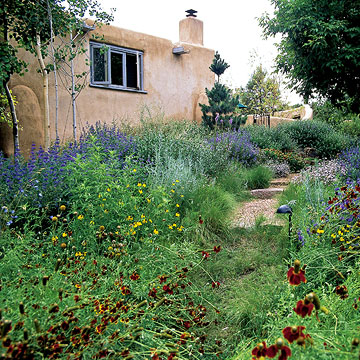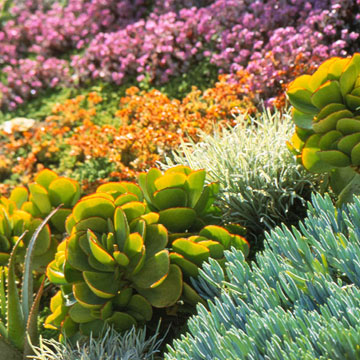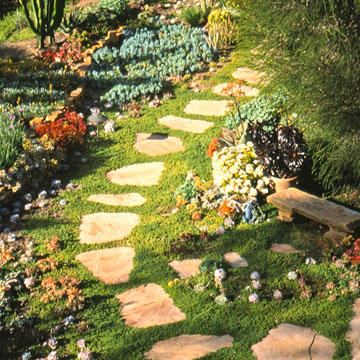






More and more people are looking to save water in their gardens. It's no wonder: In an era of increased environmental awareness, we constantly hear about water-wise practices and how we can reduce our footprint on the Earth. Xeriscaping is a landscaping alternative that you can employ in your own backyard.
Live in a water-challenged state? Find tips for landscaping in Utah and Arizona.
Xeriscaping means creating a low-water landscape. It first became popular in areas of the Southwest and Mountain West, but is spreading throughout North America. While it saves you time and money in the long term, it does require a little extra planning up front.
One of the biggest challenges for gardeners considering xeriscaping is to shift the style of plants they can use. If you've always wanted to grow a garden full of natives, a xeriscape plan will give you that opportunity.

One key to xeriscaping is using native plants. They're most adapted to your climate and can handle extremes in weather patterns.
If you live in a typically dry area, such as Arizona or New Mexico, native plants like cactus, yucca, and penstemon are some of the best choices. But don't take this to mean that these are the only kinds of plants you can enjoy in a xeriscape. Whether you live in the Southwest or upper Midwest, native perennials including rattlesnake master (Eryngium), purple coneflower (Echinacea), and goldenrod (Solidago) are just the ticket to a lush, colorfully styled xeriscape.
Just because these plants are water-wise, it doesn't necessarily mean they are drought proof. In the worst dry spells even these reliable plants can suffer from water stress. That's why it's important that your xeriscape not exclude water entirely. You may need to water your plantings during severe droughts.
Discover top native plants for your area.
Learn about beautiful, easy-to-grow drought-busting perennials!
Keep an eye out for other plants that are well adapted to your region. There may be plenty of other plants that can take your climate's conditions. For example, in areas with warm, dry summers, many Mediterranean plants thrive.

A technique you might try when laying out your xeriscape is hydrozoning. This means organizing plants in your landscape based on their watering needs. Can't live without petunias and other bedding plants? No worries. Group these plants closest to the house (or water source) in their own area so you can maximize your watering efforts without giving water to plants that don't need it.
As you move farther away from the water source your plantings should require less water. The fringes of your property become home to the toughest, water-wise plants you can find. (Note: While tough, these plants will need watering during the first season to get established.) By hydrozoning you manage water use in the overall design of your landscape -- so you don't end up with a hodgepodge of drought-tolerant and thirsty plants.
Adding mulch to your plantings will further aid water conservation. Mulch locks moisture in the soil and allows plants to use it more efficiently. There is a mulch for every style of landscape. From gravel to shredded bark, mulch also reduces weeds, meaning that yet another chore -- weeding -- gets crossed off the list of things to do.
Find out what the best type of mulch for your yard is.
Hydrozoning doesn't have to be limited to your ornamental plants. You can also plan for a xeric lawn. Choose heat-tolerant, drought tolerant varieties, such as native buffalograss.
Don't worry if you can't find drought-tolerant lawn grasses for your area. You can also keep a traditional watered lawn, especially if you have children or pets who play in the area. Just be wise about watering it: When planning your lawn, consider that narrow strips or oddly shaped areas of turf will be difficult to irrigate. Go for larger, blocky shapes to maximize your irrigation efforts.
Check out these awesome, no-mow groundcovers.
Don't be surprised if your water-wise landscape cuts your outdoor chores by half. You'll spend less time mowing and watering. It also saves you money on gas, oil, and maintenance costs.
Xeric landscapes also attract more wildlife since you are using plants found in your region. Your garden will become a haven for butterflies, bees, and other pollinators.
If you think xeriscaping is right for you, use this checklist to make sure you've covered all the steps:
Now test your water-wise knowledge with our fun quiz!
Copyright © www.100flowers.win Botanic Garden All Rights Reserved